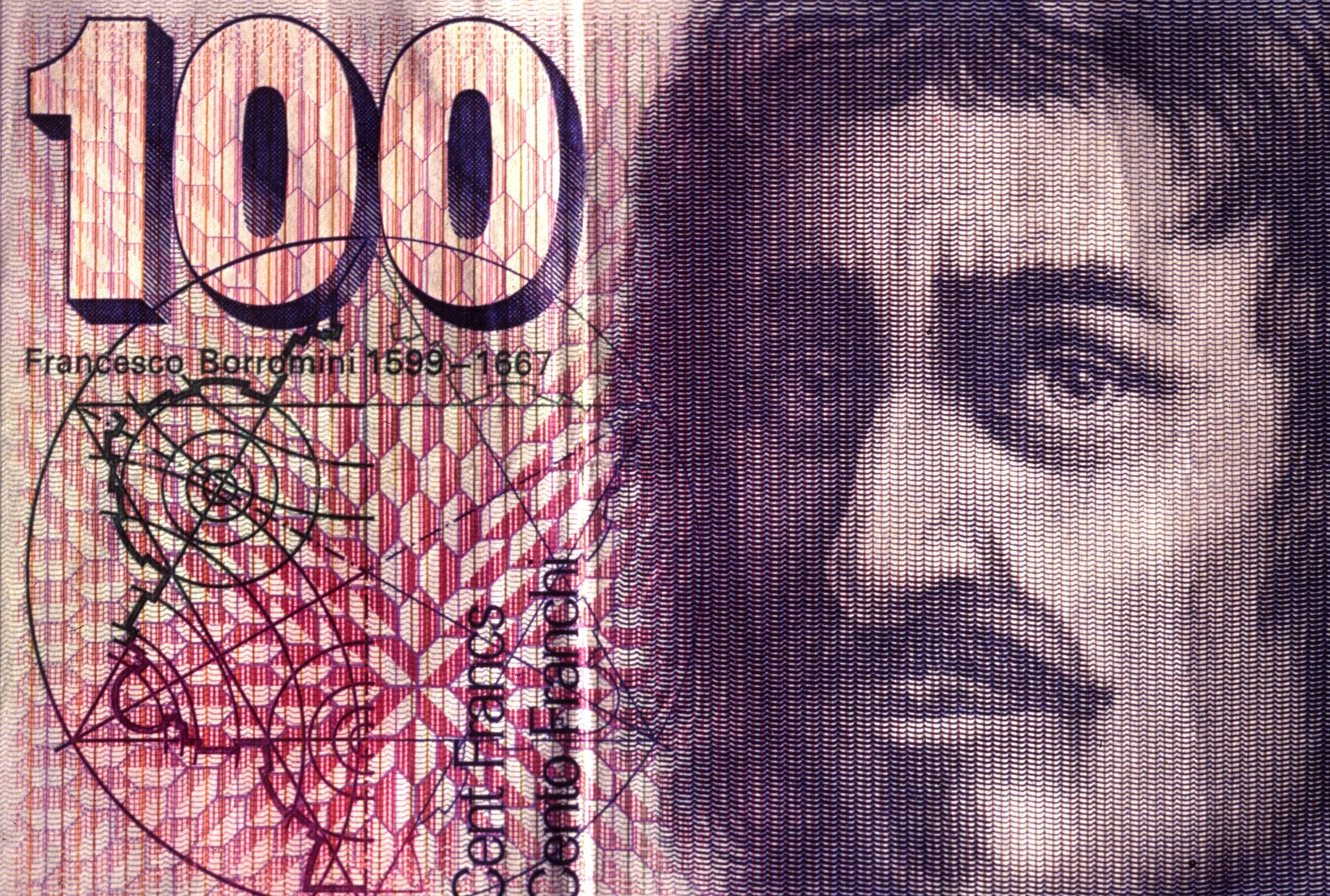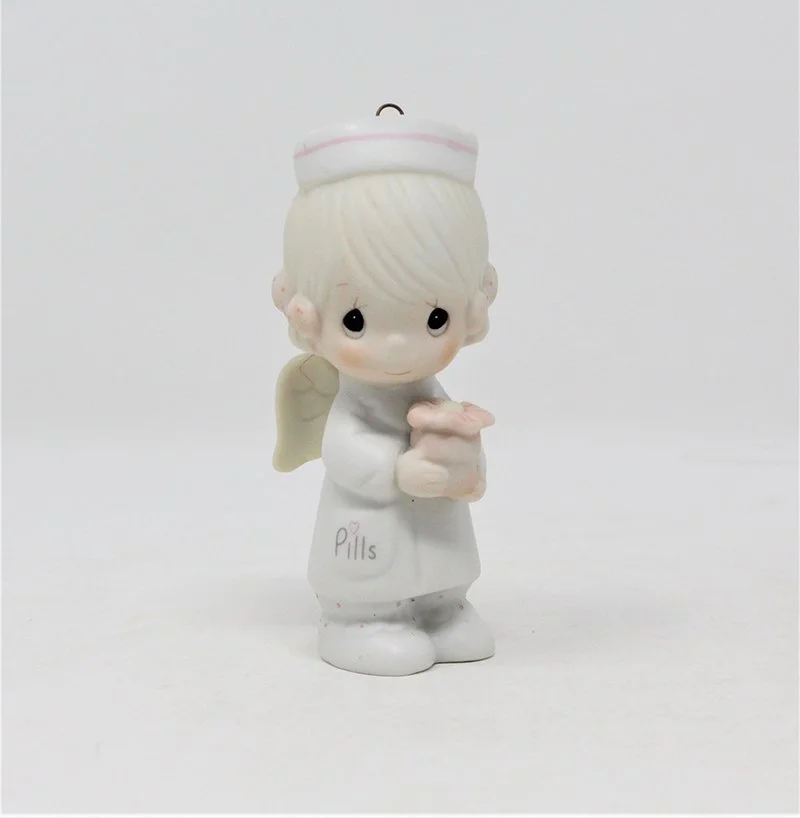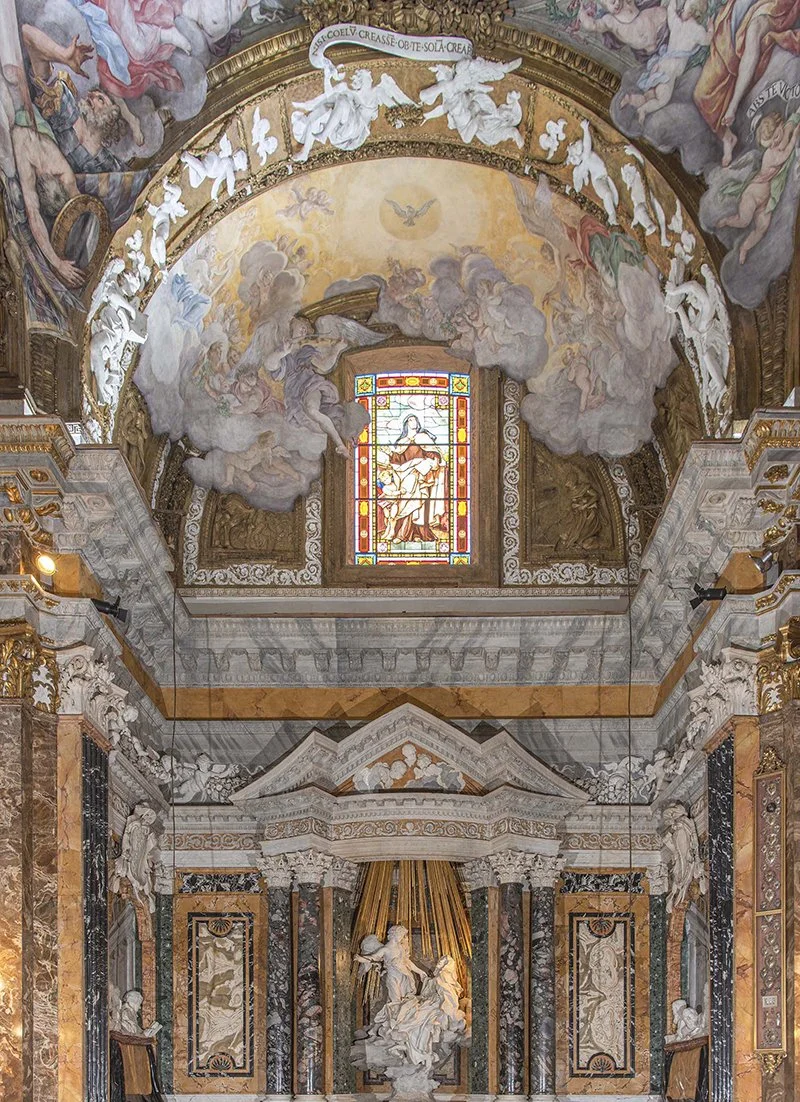Episode 21: Baroque Bro (BRQBRO) & Mystic Saint - Gian Lorenzo Bernini “The Ecstasy of Saint Teresa” 1647-52
Detail. Gian Lorenzo Bernini, The Ecstasy of St. Teresa, 1647-52. Marble (20 different kinds!), bronze, fresco, stucco, stained glass . . . Cornaro Chapel, Santa Maria della Vittoria, Rome, Italy.
In this week’s episode,
Stephanie and Russell discuss the wild intersection of two unlikely figures - Italian artist Gian Lorenzo Bernini and Spanish nun Saint Teresa of Avila - that results in the controversial, monumental masterpiece that is The Ecstasy of Saint Teresa (1647-52).
Gian Lorenzo Bernini, a pure talent with resources to nurture it, thrived without consequence under the protection of the Pope and the Roman Catholic Church. His talent, freedom and privilege led him to produce some of the best examples - or THE BEST (depending who you ask) - of Baroque sculpture and architecture. His name is synonymous with Baroque as his work always contained a combination of theatricality, dynamic compositions, opulent materials but most of all craft.
On the other hand, Saint Teresa of Avila who, born into privilege, still faced a restrictive existence as a queer woman in 16th century Spain, yet continued testing the boundaries of her autonomy even under the terrifying Spanish Inquisition. Her courage, faith, her reforming and her legendary mystical visions have come to inspire countless figures over the centuries, Bernini included.
Despite their differences, Bernini and St. Teresa shared discipline and a curiosity that pushed them to the limits of art and/or spirituality - no matter the cost. To this day, both of their shadows loom large in their respective fields and it’s hard to imagine how differently the world would look without them.
And it’s through The Ecstasy of Saint Teresa (1647-52) that their stories are forever cemented in history.
Other works discussed are The Rape of Proserpina, 1621-22. Marble.
Topics include frosting on frosting, clenching bootyholes, architect drama, visions of Jesus in your mirror/soul and . . the return of the God Bod - kind of.
The Art Pantry this week is Marble.
Be sure to listen to all the cuts that didn’t make it into the episode on our Patreon.
The featured music in this episode was “Net content electric ingredients” by Patrick Kilpatrick from the album “Introducing Patrick Kilpatrick”. This album is perfect for Spring - consider supporting his work here!
Reviewing, subscribing, liking, and sharing really helps support the show:
Consider subscribing and leaving us a review on apple podcasts.
View of medieval Avila, Spain and its fortification walls.
View of medieval Avila, Spain and its fortification walls
Peter Paul Rubens, Theresa of Avila, 1615. Oil on canvas.
Gian Lorenzo Bernini, Self Portrait as a Young Man, c. 1623. Oil on canvas.
Pietro Bernini (likely with help from Gian Lorenzo), Fontana della Barcaccia, 1627-29 . Marble.
Pietro & Gian Lorenzo Bernini, A Faun Teased by Children, 1616-17. Marble.
St. Peter’s Basilica, one of the most important churches of the Catholic Church, the Vatican City, in Rome, Italy.
Scene from Dragon Ball Z - what Russell imagines when he sees Michelangelo’s sculptures.
Scene from Spongebob Squarepants episode Artist Unknown.
Michelangelo, David. 1501-1504. Marble. 14’ high.
Detail. Michelangelo, David. 1501-1504. Marble. 14’ high.
Irregular or "Baroque” pearls
Gian Lorenzo Bernini, The Rape of Proserpina, 1621-22. Marble.
Detail. Gian Lorenzo Bernini, The Rape of Proserpina, 1621-22. Marble.
Detail of Cerberus. Gian Lorenzo Bernini, The Rape of Proserpina, 1621-22. Marble.
Detail of Cerberus. Gian Lorenzo Bernini, The Rape of Proserpina, 1621-22. Marble.
Note the varying textures between his fur and Proserpina’s smooth, polished skin.
Portrait of architect Francesco Borromini - Bernini’s rival - on a Swiss bank note.
Engraving by Giovanni Battista Piranesi of the Pantheon in Rome with bell towers (removed in 1882) by Carlos Maderno and Francesco Borromini that were nicknamed ‘asses’ ears’
Gian Lorenzo Bernini, Truth Unveiled by Time, 1645 -1652. Marble.
Bernardo Strozzi, Portrait of Cardinal Cornaro, c.1640 .Oil on canvas.
Detail. Gian Lorenzo Bernini, The Ecstasy of St. Teresa, 1647-52. Marble. Cornaro Chapel, Santa Maria della Vittoria, Rome, Italy.
Precious Moments figurine
Gian Lorenzo Bernini, The Ecstasy of St. Teresa, 1647-52. Marble. Cornaro Chapel, Santa Maria della Vittoria, Rome, Italy.
Detail of patrons viewing the Ecstasy, left chapel. Gian Lorenzo Bernini, The Ecstasy of St. Teresa, 1647-52. Marble. Cornaro Chapel, Santa Maria della Vittoria, Rome, Italy.
Detail of patrons viewing the Ecstasy, left chapel. Gian Lorenzo Bernini, The Ecstasy of St. Teresa, 1647-52. Marble. Cornaro Chapel, Santa Maria della Vittoria, Rome, Italy.
Gian Lorenzo Bernini, The Ecstasy of St. Teresa, 1647-52. Marble. Cornaro Chapel, Santa Maria della Vittoria, Rome, Italy.
Note the variety of materials used aside from the different marble like fresco and stained glass.





























